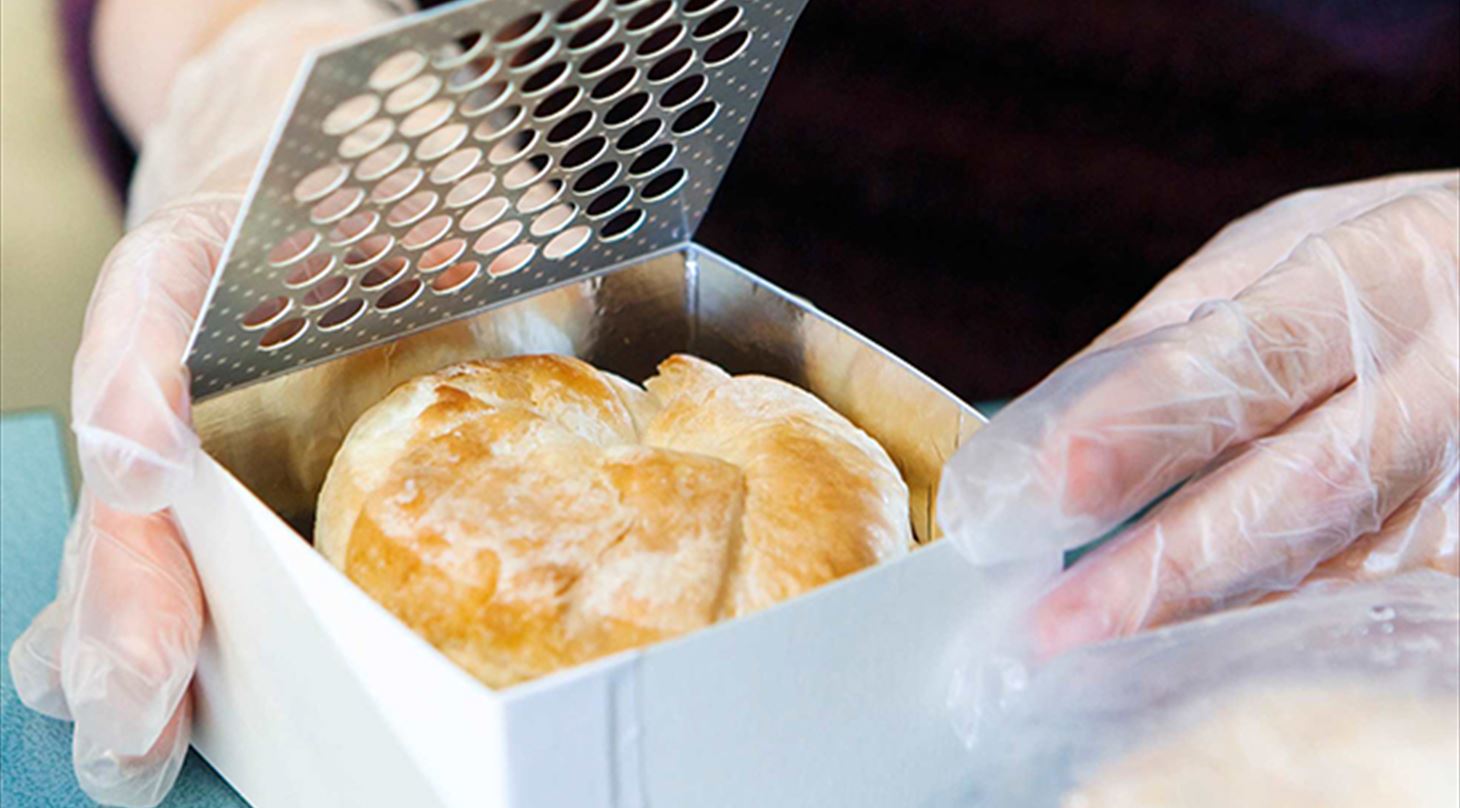
German-Danish collaboration on the development of PET-free fibre-based susceptor materials for the food industry
The industry wishes to distance itself from barrier solutions based on polymer plastics, especially when it comes to the implementation of fibre-based packaging. However, it is not only barrier materials that make use of fossil-based plastics.
Typical susceptor materials for microwave ovens, extensively used by the food industry, consist of a paper substrate carrying a metallized polyethylene terephthalate film (PET). The recycling of the paper layer can occur in the same waste stream as paper packaging laminated with a plastic layer, whereas the metallized PET layer will never be able to be recycled as pure PET.
The above issue has been on the radar of the plastics and packaging technology specialists at the Danish Technological Institute for many years, and we have previously attempted to develop PET-free susceptor materials based on various physical principles. A common feature among them has been that the base material should remain fibre based. Our motivation from the green transition perspective has been to substitute fossil-based materials with sustainable alternatives where it makes sense and is feasible. Additionally, specifically mechanically recycled PET is predicted to have a significantly higher consumption volume in the future due to new EU packaging directives regarding food contact materials. Therefore, all PET-based packaging solutions where PET cannot be mechanically recycled, such as PET-based susceptors, should be avoided.
Offering expert competencies in microwave-active packaging technology
Hence, we were ready to assist our longstanding partners from Germany, the Papiertechnische Stiftung (PTS) and Pacoon Sustainability Concepts GmbH (Pacoon), when they applied for funding from ZIM (Zentrales Innovationsprogramm Mittestand) to develop active sustainable packaging materials for food preparation in microwave ovens, under the project ‘Controlling the cooking process with fibre-based, active microwave packaging – Microwavepack’.
PTS are some of the foremost specialists in the world when it comes to paper and paper technology, whereas Pacoon is a leading design agency for sustainable packaging concepts in Germany. This meant that the project consortium lacked a partner with expert competencies in the physical and packaging technical aspects of food packaging for microwave cooking. The Danish Technological Institute was invited as a subcontractor in the project to participate in the development of susceptor materials, their simulation, as well as the physical characterization and testing of the materials with food products.
About microwave susceptors – and the project
Susceptors are materials that partially absorb microwaves and convert their energy into heat. They are widespread in food packaging for microwave ovens to achieve crispy and brown food surfaces. In practice, a susceptor is typically a laminate of aluminized PET film and paper or cardboard. Fundamentally, the thickness of this aluminium coating should be less than the electrical skin depth for alternating current at 2450 MHz, which is the operating frequency for most household microwave ovens. For instance, an aluminium layer exhibits pronounced susceptive properties if it is thinner than approximately 10 nm. The temperature of such a susceptor laminate stabilizes at around 220°C in a microwave oven, after which it can heat food through contact heating, convection, or infrared radiation.
In the project, over the next two years, a scalable solution must be found that will have the same electromagnetic and thermal functional properties as conventional susceptors without the use of aluminized PET. In more technical terms, this means developing a material with the same electrical impedance at the same wave frequency. Specifically, we will add inorganic conductive or semiconductive particles of specific size ranges either in a paper matrix or in a bio-based surface coating. According to the results of extensive experiments and theoretical calculations, the concentration of such active microscopic particles (1-100 micrometers in diameter) will be far below 5% of the total weight of the paper and coating. Therefore, such susceptor materials can be recycled as paper.
In addition to the support from ZIM, the development on the Danish side is partially supported by the Ministry of Education and Research within the framework of the Result Contracts "BF1 - Sustainable Foods" and "MA1 - Sustainable Materials".